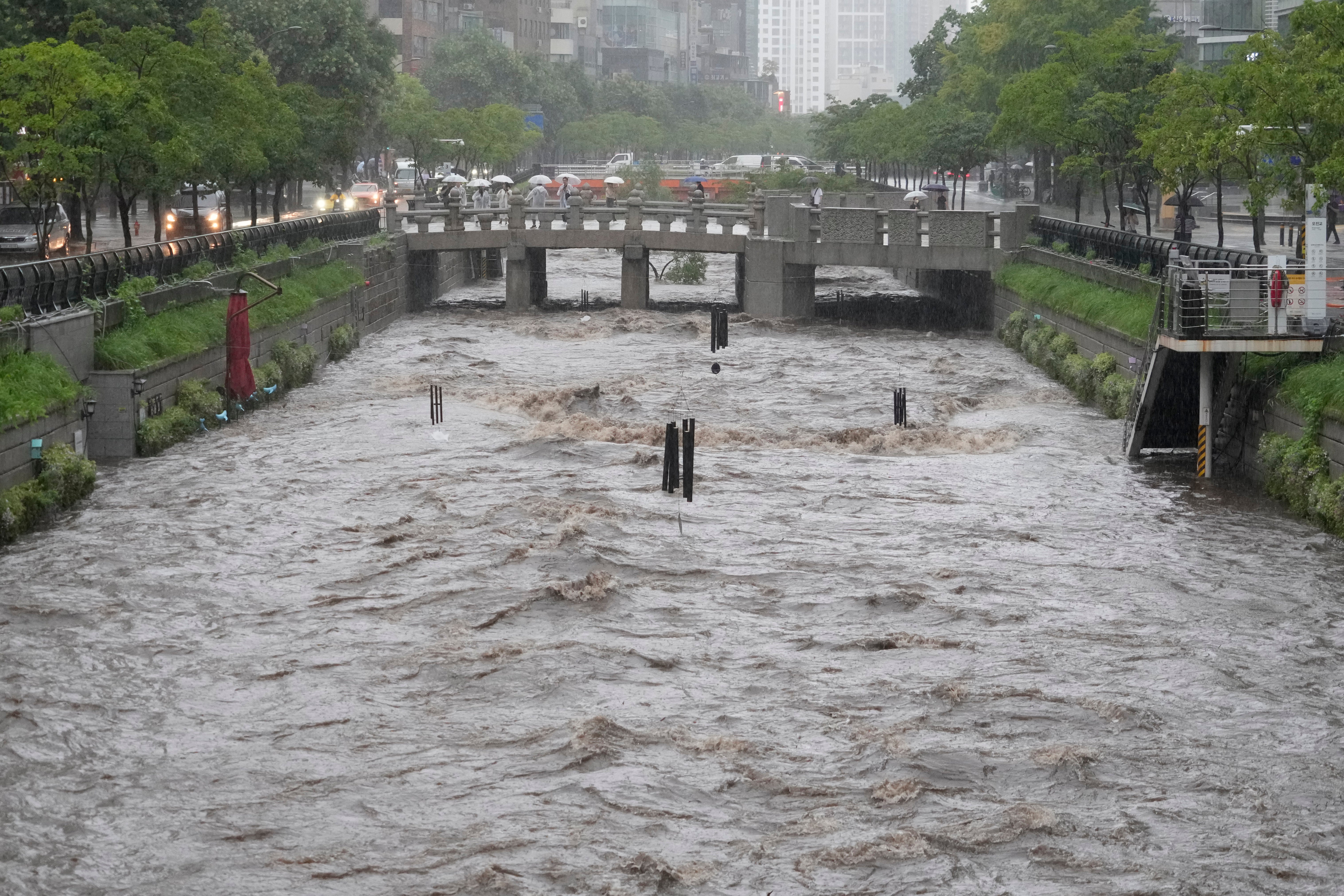Warning Kim Jong Un’s deadly landmines could float into South Korea after flooding
An estimated 2 million mines are believed to be strewn in and around the Korea border

Your support helps us to tell the story
From reproductive rights to climate change to Big Tech, The Independent is on the ground when the story is developing. Whether it's investigating the financials of Elon Musk's pro-Trump PAC or producing our latest documentary, 'The A Word', which shines a light on the American women fighting for reproductive rights, we know how important it is to parse out the facts from the messaging.
At such a critical moment in US history, we need reporters on the ground. Your donation allows us to keep sending journalists to speak to both sides of the story.
The Independent is trusted by Americans across the entire political spectrum. And unlike many other quality news outlets, we choose not to lock Americans out of our reporting and analysis with paywalls. We believe quality journalism should be available to everyone, paid for by those who can afford it.
Your support makes all the difference.North Korean landmines could be swept into South Korea by flooding, South Korea's military said on Wednesday, after the North has recently placed tens of thousands of additional deadly explosives along the rivals' heavily fortified border.
North Korea's minelaying is part of construction at the border that's been going on since April, which also includes adding anti-tank barriers and reinforcing roads. South Korea officials believe North Korea aims to boost its frontline security posture and prevent its soldiers and citizens from defecting to South Korea.
South Korea’s Joint Chiefs of Staff told local reporters that flooding caused by summer rainfall could wash the mines over the border, adding that North Korea might also deliberately float mines downriver as a provocation.
Concerns about possible North Korean provocation have deepened after Kim Yo Jong, the powerful sister of North Korean leader Kim Jong Un, threatened new countermeasures Tuesday against South Korean civilian activists' efforts to drop leaflets over the north by balloon. North Korea has earlier responded by flying trash-carrying balloons toward South Korea, which have not caused major damage.
The Joint Chiefs of Staff said in a statement that North Korea's military has suffered “many casualties" from about 10 mine explosions and heat exposure during the intense border works.
An estimated 2 million mines are believed to be strewn in and around the Koreas' 248 kilometer (154 miles)- long and 4 kilometers (2.5 miles)-wide land border. Experts say both Koreas have poorly managed their mines and don’t know exactly how many they have planted or where they are.
It’s not unusual for wooden North Korean mine boxes to wash downriver in summer, causing deadly incidents in South Korea. A 2015 mine explosion blamed on North Korea maimed two South Korean soldiers and pushed the rivals to the brink of an armed conflict.

The Joint Chiefs of Staff said it's it’s also looking at other possible provocations by North Korea, such as firing across the border at incoming South Korean balloons. It said the South Korean military is strengthening its readiness to repel any potential aggression by North Korea.
North Korea is extremely sensitive to South Korean activists' efforts to scatter anti-Pyongyang leaflets, seeing them as a threat its political system and a challenge to its ban on access to foreign news for most of its 26 million people, experts say.
In 2020, North Korea destroyed an unoccupied South Korean-built liaison office on its territory in a furious response to South Korean civilian leafleting campaigns. In 2014, North Korea fired at balloons flying toward its territory and South Korea returned fire, though there were no casualties.
Animosities between the rival Koreas have been running high in recent years, with North Korea extending provocative weapons tests and South Korea expanding its military drills with the United States in a tit-for-tat cycle.
North Korea says it was compelled to pursue nuclear weapons to cope with U.S. military threats, though the U.S. and South Korea have steadfastly said they have no intentions of invading the North.